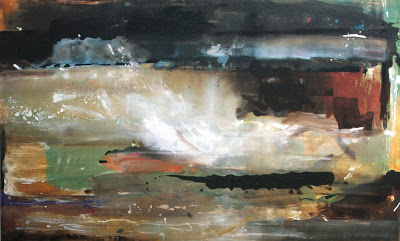My “Sightings” column in today’s Journal is devoted to Recomposed by Max Richter, an avant-garde rewrite of Vivaldi’s Four Seasons. Here’s an excerpt.
* * *
Brace yourselves, music lovers: Antonio Vivaldi’s “Four Seasons” has come to Greenwich Village. (Le) Poisson Rouge, an ultra-trendy nightspot (superfluous parentheses in the original) which bills itself as a “multimedia art cabaret” that seeks to “revive the symbiotic relationship between art and revelry,” booked a two-night run of classical music’s most overplayed masterpiece.
Why? Because “The Four Seasons” has been refurbished by Max Richter, an avant-garde composer of minimalist inclination, and recorded for Deutsche Grammophon by violinist Daniel Hope, who played it earlier this week at (Le) Poisson Rouge. And before you bruise your eyeballs by rolling them, here’s the real surprise: “Recomposed by Max Richter,” as Mr. Hope’s new CD is called, is a bewitchingly brilliant musical hybrid that manages against all odds to breathe life into an exhausted warhorse that a great many listeners–myself included–long ago ceased to find listenable.
Here’s how Mr. Richter explains what he did to “The Four Seasons”: “In my notes you will find parts that consist of 90% of my own material; but on the other hand you will find moments where I have only altered a couple of notes in Vivaldi’s original score and shortened, prolonged or shifted some of the beats. I literally wrote myself into Vivaldi’s score.” That bald description, however, does nothing to suggest the arresting freshness with which Mr. Richter has taken the repetitive patterns of “The Four Seasons” and passed them through the twin refracting prisms of post-minimalist classical composition and modern dance music.
Not at all surprisingly, musical neophobes bristle at the very thought of “Recomposed by Max Richter.” The headline of David Hurwitz’s grumpy Classics Today review speaks for all such folk: “Vivaldi Discomposed, or Maybe Just Dissed.” I can’t help but wonder whether these listeners are aware that long before the coining of the hipper-than-thou term “remix,” such acts of creative reconstruction were common throughout the world of art….
 Even more radical is Helen Frankenthaler’s “For E.M.,” the 1981 painting in which the founder of color-field abstraction took Edouard Manet’s Still Life with Carp, an 1864 canvas that hangs in the Art Institute of Chicago, and turned it into an abstract painting whose intimate relationship to Manet’s original is still self-evident. Ms. Frankenthaler described her method this way: “I decided to painstakingly copy areas and colors, but there’s no fish in my painting….At times I couldn’t resist ignoring the Manet to meet the needs of my own abstract canvas. Still, side by side the similarities should be obvious” So they are–yet “For E.M.” is a fully independent creation whose bold luminosity can be relished regardless of whether you know the Manet painting from which it derives…..
Even more radical is Helen Frankenthaler’s “For E.M.,” the 1981 painting in which the founder of color-field abstraction took Edouard Manet’s Still Life with Carp, an 1864 canvas that hangs in the Art Institute of Chicago, and turned it into an abstract painting whose intimate relationship to Manet’s original is still self-evident. Ms. Frankenthaler described her method this way: “I decided to painstakingly copy areas and colors, but there’s no fish in my painting….At times I couldn’t resist ignoring the Manet to meet the needs of my own abstract canvas. Still, side by side the similarities should be obvious” So they are–yet “For E.M.” is a fully independent creation whose bold luminosity can be relished regardless of whether you know the Manet painting from which it derives…..
* * *
Read the whole thing here.
A trailer about Recomposed by Max Richter:
Terry Teachout on the arts in New York City
An ArtsJournal Blog
